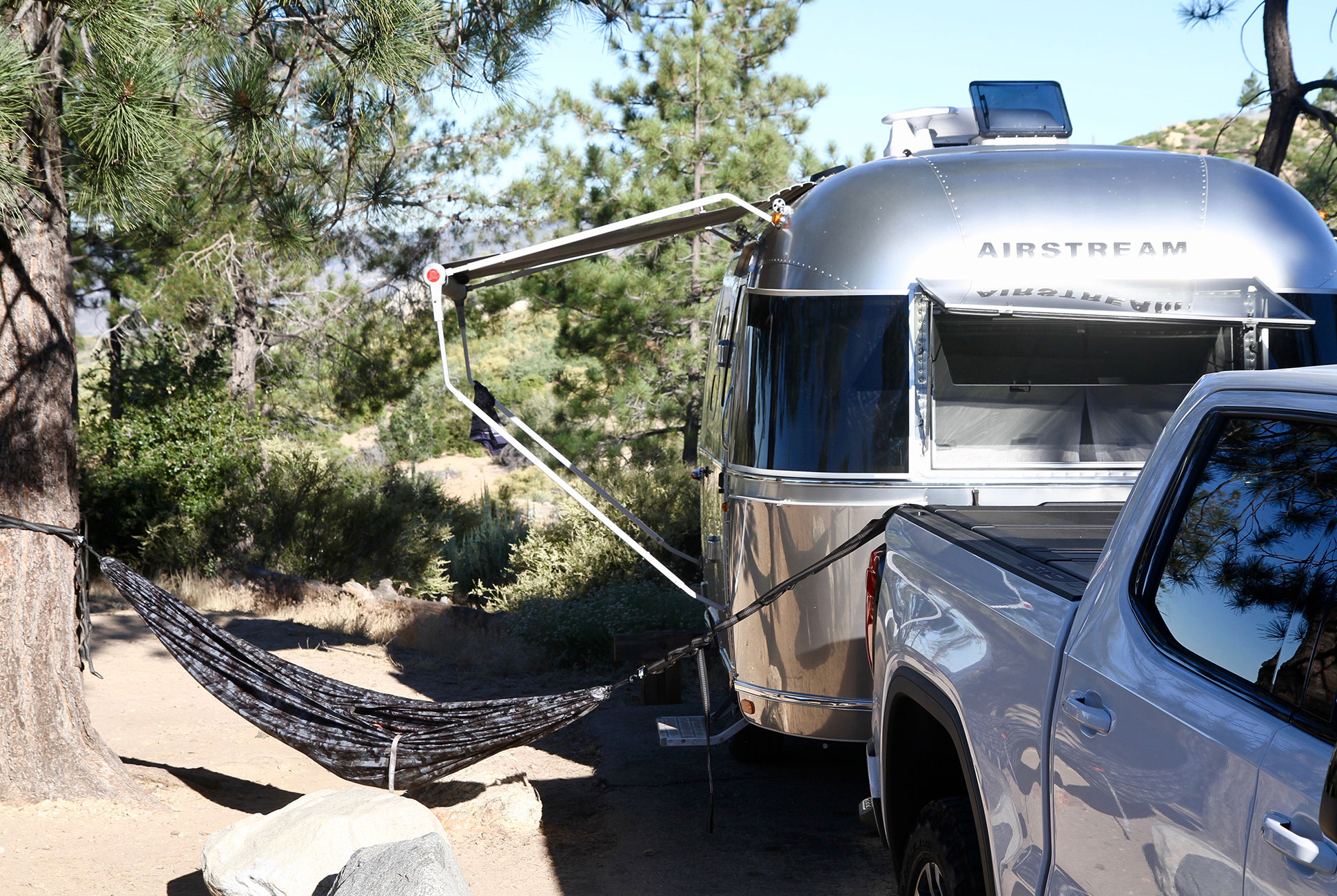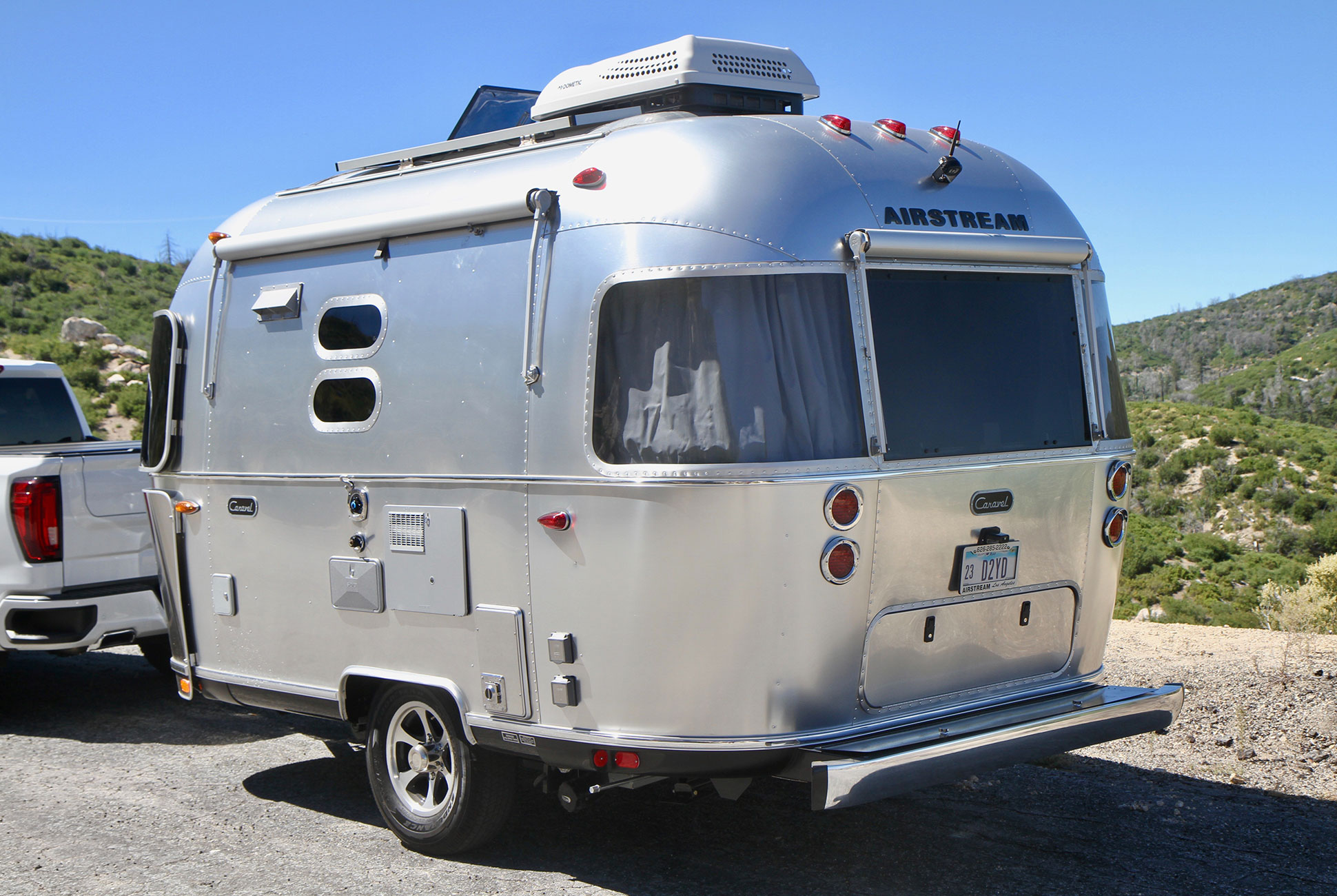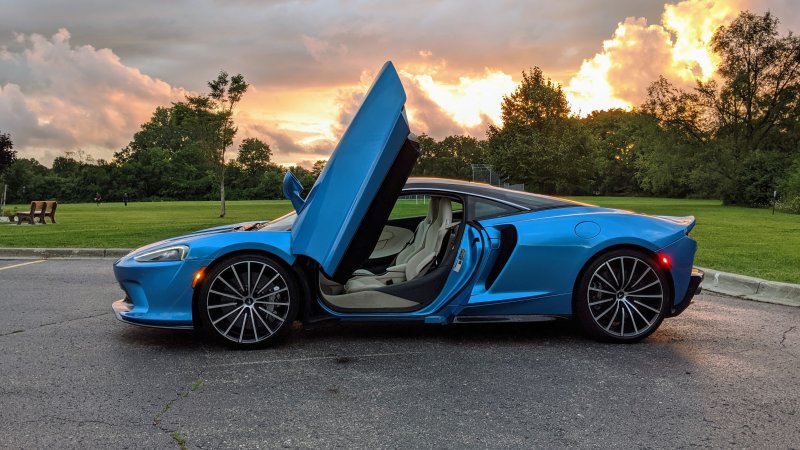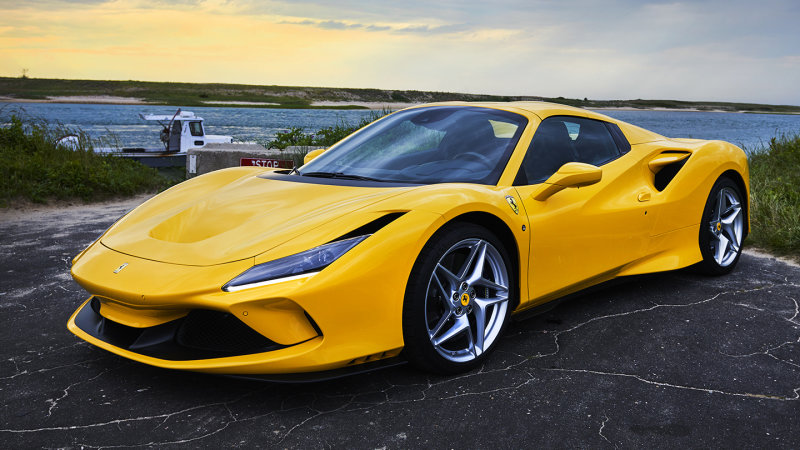The 2020 Caravel is a new addition to the Airstream stable, though founder Wally Byam first used the name for his trailers in 1956. Those original Caravels, with a moniker that pays homage to a speedy style of Portuguese ship, were created by Byam and Co. as a showcase for lightweight, compact design. The 2020 version of the trailer continues the tradition.
The Caravel, which comes in lengths of 16, 19, 20 and 22 feet, offers space to sleep four, a galley with two gas burners and a sink, a bathroom with shower and a dining area that converts into a second bed. This trailer fits into the Airstream line as a similarly-sized-but-more-premium version of the venerated, entry-level Bambi, while slotting below the larger Flying Cloud and Classic. The Caravel is $12,000 more than the Bambi, but it offers a host of features that the latter does not: panoramic windows, an electric hitch jack, a ducted climate system and 3.5 more inches of interior height, to name a few.
The Good: The 2020 Caravel has tremendous curb appeal. The exterior oozes class, thanks to shiny, unblemished aluminum wrapper. Where other trailers are cloaked in quickly-dated, multicolor graphics, Airstream only shows rivets and a couple tasteful badges. Beyond its looks, it’s easy to maneuver and tow. Even after a winding, 50-mile drive on a two-lane mountain road, I still had the energy to back the trailer into several different camping spots, just to test the views.
Who It’s For: Someone who loves weekend camping trips and the premium name and classic look of an Airstream, but isn’t quite gearing up for their retirement rig just yet.

Watch Out For: The all-electric fridge cools more quickly than previous gas absorption models, but it also mercilessly drains the battery if you’re camping without hookups. And the awnings can be a bit of a pain to latch, unlatch and roll out; the safety locks on my trailer had wedged themselves stuck into a closed position at some point, and I even clumsily drew a little blood trying to unlatch the arms of the awning.
Alternatives: Airstream’s revered name and reputation for quality means they can effectively set their own price in the industry. Still, other companies are building trailers with an eye towards the influx of younger, more active buyers. Other compact premium travel trailers include the Winnebago Micro Minnie ($23,845+) and the Oliver Legacy Elite I ($47,900+).
Review: The RV industry has tripled in size over the last decade as it’s rebounded from the rock bottom of the Great Recession, and perhaps no company has benefited more from this era of growth than Airstream. In that time, the 86-year-old trailer maker has grown from 200 employees to 1,000, reversed a 60% downward sales trend into a 210% upswing and begun construction on a brand new production facility in Jackson Center, Ohio.
It makes sense, then, that Airstream has continued to churn out new models and redefine their product line, especially in regards to smaller trailers. The company is taking aim at first-time buyers and nomadic workers who desire compact, mobile, connected luxury. They launched the Basecamp in 2016 and the Nest in 2019 — both imaginatively-designed, forward-thinking, 16-foot trailers priced under $50,000. “Small is the new big,” Airstream CEO Bob Wheeler told Bloomberg last year. “Millennials are interested in the less intimidating, easier-to-use models.”

With this in mind, the 2020 Caravel was born. It’s a middle child, offering inherited bits from its forebears in the product line. It shares the iconic “silver bullet” exterior styling of the $153,000 Classic, but compressed into a 16-foot package. It has the efficient interior layout of the company’s most popular line, the Bambi, but with added luxuries like a ducted climate system and panoramic windows. The Caravel is not cheap, but it provides approachable, convenient and unfussy access to adventure just the same.
So it was when I took the trailer out on a summer Friday, towing the 16-foot Airstream Caravel up the two-lane Angeles Crest Highway snaking high into the San Gabriel mountains. I was underway on a weekend mission to get off the grid and out of Los Angeles, barely visible through the smog some 5,000 feet below me.
I was trying to spend the weekend as a statistic, embodying these RV industry trends I’d read so much about. I knew 45% of Airstream buyers in 2018 were purchasing a trailer for the first time. Further, I knew these buyers are skewing younger than in the past, and they’re gravitating to the convenience of the compact, moderately-priced models like Basecamp, Nest and Bambi — or now, the Caravel — while leaving top-of-the-line six-figure RVs for the well-heeled retirement set. Airstream is modernizing, catering to changing tastes and gauging the feasibility of turning Instagram likes into trailer fans who actually #LiveRiveted instead of just searching it.
The Caravel fits the bill on at least one critical component: it was a complete breeze to tow. My tow vehicle, the GMC Sierra AT4, was a great match for the trailer and immensely capable, but it’s also a testament to the aerodynamic design and build of the Caravel that I felt completely comfortable on the winding 50-mile ascent and descent deep into the Angeles National Forest. Further, I meandered through the narrow fingers of my campground with ease, worrying little about my turning radius.
Some longer Airstream models I’ve tested, like the 22-foot Bambi, are prone to swaying on the road. Not so with the Caravel, which seemed to tuck in tightly behind the Sierra for the whole drive. I had a similar sensation when testing the Nest. 16 feet seems to be a sweet spot for trailer length. This towability makes the Caravel an attractive option for an urbanite looking to leave town on a quick weekend jaunt. Even maneuvering down residential avenues and into a suburban Los Angeles shopping center upon my return proved to be unstressful, due to the slim dimensions of the trailer.
Once settled at camp, the Caravel was a welcome companion, serving up all the shelter, cooking and bathroom amenities needed. Still, I was left with a few quibbles that might frustrate me if I had forked over $61,000 for the trailer. The all-electric fridge is intended as an upgrade — it offers quicker cooling than the gas absorption fridge found in other models — but it quickly depletes the battery when camping unless you’re plugged in. Even with the Caravel’s solar charging capabilities and the trailer parked in bright sunlight, the fridge couldn’t stay for the duration of this 48-hour trip, even when my only other drains on the battery were a fan and 30 minutes of stereo use. (Of course, this could easily be remedied by bringing along a generator, camping at a location with hookups or even running your car for a bit with the trailer attached.)

My second minor quibble: the awnings are a bit of a pain to latch and unlatch. The safety locks stick, and the screw points will pinch your fingers if you’re not careful. The 2019 Nest has an automatic awning with LED lights; why pay $20,000 more for the Caravel and lose a convenient feature?
Yet while those criticisms about the Caravel stuck out to me as a reviewer, they didn’t much bother me as a camper. The core objective was to be outside, and to get there quickly and easily. 72 hours later — after the trailer was returned to the Airstream dealership, and I’m back at the computer, listening to honking traffic outside — I’m still thinking about the view from the bed of the Caravel on Saturday morning.
Verdict: The Caravel is ideal for urban dwellers seeking a regular, easy weekend escape from a sprawling metropolis to the low-key pleasures of nature.
2020 Airstream Caravel 16-Foot Key Specs
Weight: 3,200 pounds
Sleeping Capacity: 4 adults
Fresh Water Capacity: 23 gallons
Interior Height: 6 feet, 8 inches
Exterior Weight: 8.0 feet
Airstream provided this product for review.

Hot takes and in-depth reviews on noteworthy, relevant and interesting products. Read the Story




